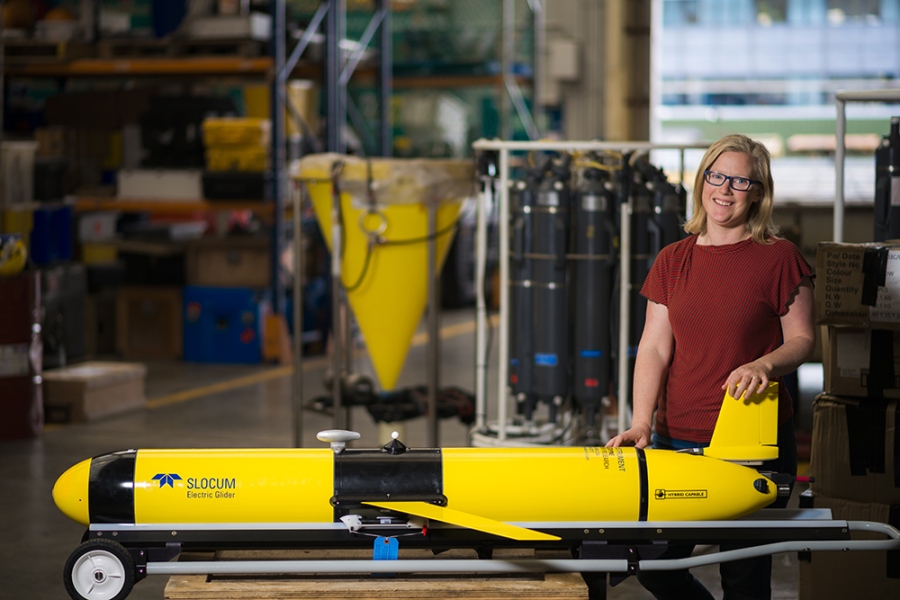Exploring the frontier of New Zealand oceanographic research is the launch mission for Manaia, NIWA’s newly named underwater glider.
Manaia is the name chosen for the US-built Slocum research glider in an online competition this month. Manaia were often carved into the ornate tauihu figureheads of sea-going waka to give spiritual direction to the waka's journey; the Maori name represents the balance between the sky, the earth and the sea.
The glider will be launched from deepwater research vessel Tangaroa, which embarks today [Monday 4 May] on a 20-day voyage to the northern entrance of the Hauraki Gulf, led by NIWA Coastal Physicist Dr Joanne O’Callaghan and Marine Geologist Dr Scott Nodder.
This is the first of two marine scientific research voyages planned for the North-East Shelf of the North Island/Te Ika a Māui, between Hauraki Gulf in the north and East Cape-Poverty Bay in the south. The aim of this research programme is to understand how cross-shelf exchange processes (boundary currents and upwelling) influence coastal productivity, biogeochemistry and ecosystem connectivity. The voyage also provides a unique opportunity, in collaboration with the University of Otago, to collect new sediment samples from the shelf and slope to complement water column samples for trace metal analyses – the first time such samples have been collected in this region for this scientific purpose.
To achieve the scientific objectives of the voyage, the scientists will anchor eight moorings to the seafloor that will stay in position for a year to collect information on the ocean’s flow and stratification, together with sediment traps that collect falling marine particles. The moorings will provide insights into how nutrients are formed and transferred between the ocean surface and the deep ocean.
“There are a number of competing processes which regulate the marine ecosystem. This voyage will be sampling flow stratification, physics, nutrients, sediments, ocean pH (ocean acidification) as well as primary production and zooplankton,” says Dr O’Callaghan.
Manaia will be deployed to collect data on temperature, salinity, pressure, oxygen, fluorescence, light and turbidity that will complement the information gathered by the fixed moorings.
Dr O’Callaghan says that this voyage will significantly advance our understanding of how the marine ecosystem of the North-East Shelf works. “Marine ecosystems are increasingly exposed to unprecedented pressures that potentially compromise their structure and biodiversity, and consequently the benefits they provide.
Globally, shelf regions are highly productive, but New Zealand’s shelf seas are comparatively narrow, and their location between highly dynamic ocean currents and weather systems results in complex across- and along-shelf transport mechanisms.
“Previous research into these cross-shelf exchanges has focussed primarily on coastal upwelling or coastal trapped waves,” says Dr O’Callaghan. “This voyage is moving beyond that single-process perspective to a multi-system approach that encompasses the complex interactions in the marine environment, some of which are dependent on each other, but not always.”
The oceanic research will also broaden the understanding of the whorls and swirls below the ocean’s surface that have been likened by scientists to “the weather of the ocean”.
RV Tangaroa leaves Wellington Monday 4 May and returns Friday 22 May.

